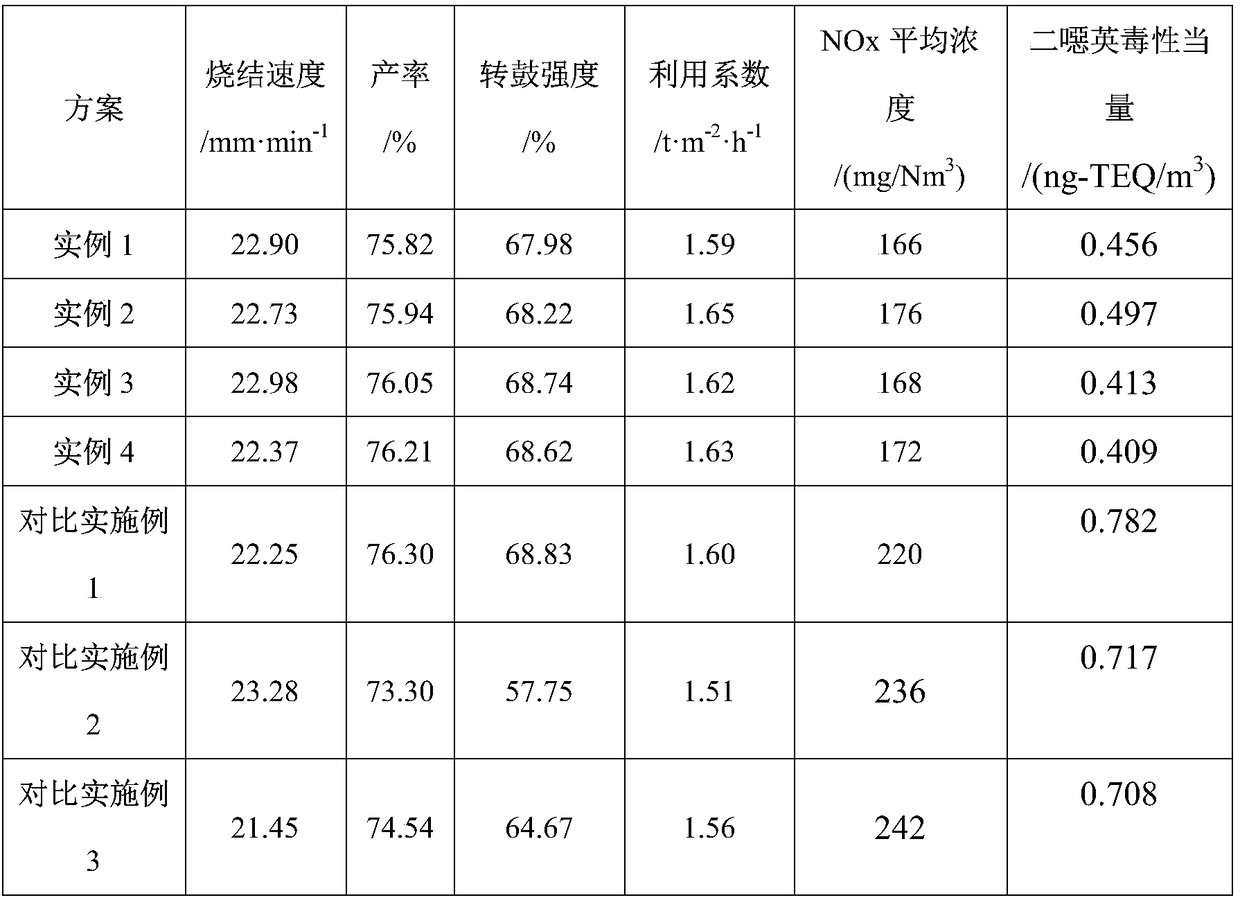Method for realizing iron ore sintering NOx and dioxin emission reduction by recycling waste activated carbon
An activated carbon and resource-based technology, which is applied in the field of iron and steel metallurgy, can solve the problems of difficult to achieve NOx outlet emission concentration, increased content of harmful impurities, and easy wear and tear, so as to inhibit the formation of dioxin, enhance surface activity, and promote catalysis Restoration effect
- Summary
- Abstract
- Description
- Claims
- Application Information
AI Technical Summary
Problems solved by technology
Method used
Image
Examples
Embodiment 1
[0041] Based on the iron ore sintering NOx and dioxin emission reduction method based on the resource utilization of waste activated carbon, first pretreat the waste activated carbon powder under the sieve of the desulfurization and denitrification activated carbon analysis tower, and impregnate and stir it with deionized water according to the volume ratio of 1:3 for 1 hour. And use the method of wet ball milling to grind the waste activated carbon to a particle size of -0.5mm to be more than 90%, then filter, and vacuum dry at 75°C. After drying, the moisture content of the waste activated carbon is 6%. The surface of the activated carbon is sprayed with a urea solution with a concentration of 20%, and its mass is 1.2% of the mass of the activated carbon. The pretreated activated carbon replaces 40% of the coke powder (the mass of the coke powder in the entire sinter) according to the heat, and the waste activated carbon is mixed with coarse coke powder, digested quicklime an...
Embodiment 2
[0043] Based on the iron ore sintering NOx and dioxin emission reduction method based on the resource utilization of waste activated carbon, first pretreat the waste activated carbon powder under the sieve of the desulfurization and denitrification activated carbon analysis tower, and impregnate and stir it with deionized water according to the volume ratio of 1:3 for 0.2 hours. And use the method of wet ball milling to grind the waste activated carbon until the particle size of -0.5mm is more than 90%, then filter it, and dry it under vacuum at 85°C. After drying, the water content of the waste activated carbon is 10%. A urea solution with a concentration of 40% is sprayed on the surface of the activated carbon, and its mass is 0.2% of the mass of the activated carbon. The pretreated activated carbon replaces 30% of anthracite (the mass of coke powder in the whole sinter) according to the heat, and the waste activated carbon is mixed with coarse anthracite, digested quicklime ...
Embodiment 3
[0045] Based on the iron ore sintering NOx and dioxin emission reduction method based on waste activated carbon resource utilization, first pretreat the waste activated carbon powder under the sieve of the desulfurization and denitrification activated carbon analysis tower, and impregnate and stir it with deionized water according to the volume ratio of 1:4 for 0.5 hours. And use wet ball milling method to grind waste activated carbon to -0.5mm particle size is more than 90%, then filter, vacuum dry at 70-95 ℃, after drying, the water content of waste activated carbon is 10%, dry The surface of the final activated carbon is sprayed with a urea solution with a concentration of 30%, and its mass is 0.8% of the activated carbon mass. The pretreated activated carbon replaces 30% of the coke powder (the mass of the coke powder in the entire sinter) according to the heat, and the waste activated carbon is mixed with coarse coke powder, digested quicklime and hematite concentrate with...
PUM
 Login to View More
Login to View More Abstract
Description
Claims
Application Information
 Login to View More
Login to View More - R&D
- Intellectual Property
- Life Sciences
- Materials
- Tech Scout
- Unparalleled Data Quality
- Higher Quality Content
- 60% Fewer Hallucinations
Browse by: Latest US Patents, China's latest patents, Technical Efficacy Thesaurus, Application Domain, Technology Topic, Popular Technical Reports.
© 2025 PatSnap. All rights reserved.Legal|Privacy policy|Modern Slavery Act Transparency Statement|Sitemap|About US| Contact US: help@patsnap.com

